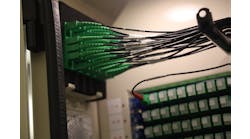Bob Fesmire of ABB
ABB’s Bob Fesmire explains how energy storage is becoming more refined, and acting as an enabler for microgrids.
Most of the time when people talk about microgrids, they talk about reliability (e.g., for a hospital or other critical load) and renewables. When people talk about renewables, they often talk about storage (e.g., to maximize the output of a rooftop solar array). And when people talk about storage, they often refer to enhancing reliability.
Of course there’s more to microgrids, storage and renewables than this circular conversation, and the key is economics (aka, a business case).
A recent article in Electric Light and Power referenced a 2015 Rocky Mountain Institute study that showed the value of energy storage across 13 different applications “ranged from $0 to $200 per kW-year, with the outliers, distribution deferral and transmission deferral, coming in at $500 per kW-year and $900 per kW-year, respectively.”
Those are encouraging figures, but in practice commercial microgrid viability remains elusive. Aside from those serving a critical load, a remote facility or some other application where the choice is between microgrid power and no power at all, one-trick-pony installations are hard to justify. The business case needs more than a single play like outage ride-through or increasing local generation capacity. This is where storage can really make the difference, but only when the given device is carefully chosen and the microgrid is engineered as a whole.
Of course, storage technologies are not created equal, and to illustrate let’s use an Olympic analogy. Some are like sprinters, great at delivering a lot of power very quickly (e.g., capacitors, flywheels) while others are like distance runners, providing steady power over a longer duration (e.g., lead-acid batteries). Why, then, would anyone expect Mo Farrah to compete with Usain Bolt or vice versa?
Hybrid energy storage systems (HESS) offer a solution that matches storage technology to the given task. So, for example, you might have a capacitor that’s great at providing second-to-second adjustments to smooth the output of solar panels, along with a battery designed to absorb excess generation during the day and discharge after sunset.
In fact, Duke Energy has a HESS project running right now at its Rankin substation that uses exactly this combination. It went live in February, so hopefully soon there will be some operational results to report.
Having substantial power capability opens up the potential to provide ancillary services back to the grid, which in turn creates a new value stream. For a prospective microgrid owner/operator, that’s of great interest.
Flywheels and capacitors, for example, can provide multiple services from power factor and harmonic correction that increases the efficiency of rotating equipment to buffering dynamic loads in order to reduce demand charges. They can also act as a virtual generator giving frequency and voltage reference to enable the use of solar inverters within a microgrid, or providing enough storage to black start a diesel gen set.
Batteries can perform similarly. SEPTA, the Philadelphia-area transit operator, installed a battery energy storage system (BESS) that captures the energy of braking trains and then serves it up again when the trains accelerate. But that’s not all—the system also provides frequency regulation to the surrounding grid, a service for which SEPTA is paid. So, SEPTA is not only capturing energy that would otherwise be lost (as heat via resistors on the roof of the train), they are selling some of that “found energy” back to the grid.
While the SEPTA installation may not technically be a microgrid (it remains connected to the utility distribution system), the same configuration could be applied to any grid-embedded microgrid. Those that have substantial on-site generation, such as an industrial facility with its own gas turbines, have the most to gain. There is a reliability aspect, but the business case for a microgrid gets better with an actual revenue stream.
Obviously this is predicated on market rules that allow such facilities to play in the ancillary services market, and it’s still very early days for these kinds of applications. Still, the economic viability of any microgrid improves with the range of services it can provide, especially if the owner gets paid for them. Energy storage opens up those opportunities, and going forward I expect we’ll see even more use of HESS to optimize them.
Bob Fesmire is a strategic communications manager at ABB and has written more than 120 articles and white papers on topics ranging from microgrids and renewables to industrial automation and energy efficiency. He is based in Cary, NC.







